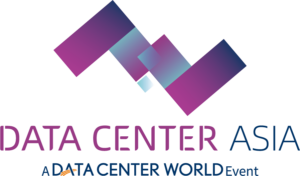A server room is a small, often on-premises space housing a limited number of servers, while a data center is a large, professionally managed facility with servers, storage, networking, power, cooling, and security systems designed for high availability, scalability, and redundancy.

Join Data Center Asia Malaysia 2025
Don’t miss Data Center Asia Malaysia 2025, part of Smart Nation Expo, where Malaysia’s data center ecosystem comes alive. Attend expert-led seminars, discover cutting-edge technologies, and network with industry leaders driving cloud, edge computing, and sustainable infrastructure across the region. Secure your spot as a visitor or exhibitor!
What is a Server Room?
A server room is a designated area within a building, typically on-premises, where an organization houses its IT equipment, including servers, networking devices, and storage systems.
Key Characteristics of Server Room:
- Size & Scale: Generally smaller, suitable for small to medium-sized businesses with limited IT infrastructure
- Cost: Lower initial investment compared to data centers, making it a cost-effective solution for businesses with budget constraints.
- Control: Offers complete control over hardware, software, and security protocols, allowing for tailored configurations to meet specific business requirements.
- Maintenance: Requires in-house IT staff for regular maintenance, updates, and troubleshooting.
Limitations of Server Room:
- Scalability: Limited capacity for expansion; may require significant investment to upgrade as business needs grow.
- Security: While secure, may lack advanced security measures found in dedicated data centers.
- Redundancy: Often lacks built-in redundancy for power, cooling, and network connectivity, increasing the risk of downtime.
What is a Data Center?
A data center is a specialized facility designed to house a large number of IT systems and associated components, such as telecommunications and storage systems, with high levels of security, redundancy, and scalability.
Key Characteristics of Data Centers?:
- Size & Scale: Larger facilities capable of supporting enterprise-level operations and services.
- Infrastructure: Equipped with advanced infrastructure, including redundant power supplies, HVAC systems, fire suppression, and high-speed network connectivity.
- Security: Enhanced physical and digital security measures, such as biometric access controls, surveillance systems, and 24/7 monitoring.
- Scalability: Designed for easy scalability, allowing businesses to expand their IT infrastructure as needed without significant additional investment.
Advantages of Data Centers:
- Reliability: High uptime and availability due to redundant systems and infrastructure.
- Compliance: Often meets industry standards and regulatory requirements, making it suitable for businesses in regulated sectors.
- Disaster Recovery: Built-in disaster recovery capabilities to ensure business continuity in case of failures.
Considerations of Data Centers:
- Cost: Higher operational costs, including service fees, compared to maintaining an in-house server room.
- Control: Less direct control over hardware and configurations, as the infrastructure is managed by a third-party provider.
